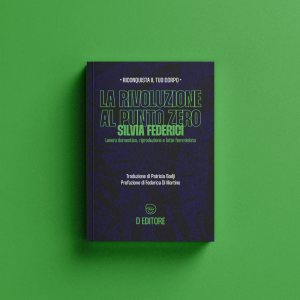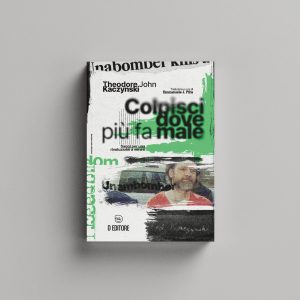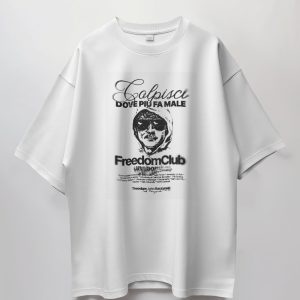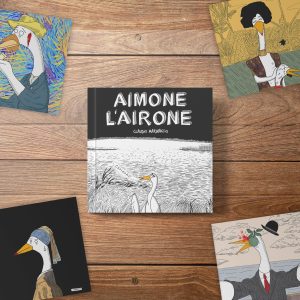[vc_row][vc_column][vc_custom_heading text=”Interventi di ristrutturazione di abitazioni nelle comunità Rom nella Repubblica della Macedonia del Nord.” font_container=”tag:h1|text_align:center|color:%23dd0000″ use_theme_fonts=”yes”][/vc_column][/vc_row][vc_row][vc_column width=”1/2″][vc_zigzag][vc_custom_heading text=”SEZIONE 1 – INFORMAZIONI GENERALI” font_container=”tag:h4|text_align:center|color:%230a0a0a”][vc_column_text]Link o sito web: thekune.org/research
Keywords: Architettura circolare, riuso, ristrutturazione, progettazione partecipata, informale.
Capofila/leader o soggetto attuatore: Manfredi Mazziotta, The Kune.
Luogo di realizzazione: Prilep, Vinica, Stip, Berovo – Repubblica della Macedonia del Nord.
Il progetto/la pratica è stato/a completato/a? No.
Finanziamenti: Fase di ricerca fondi.
Goal Agenda 2030: 3) Salute e benessere; 8) Lavoro dignitoso e crescita economica; 11) Città e comunità sostenibili.[/vc_column_text][/vc_column][vc_column width=”1/2″][vc_zigzag][vc_custom_heading text=”SECTION 1 – GENERAL INFORMATIONS” font_container=”tag:h4|text_align:center|color:%230a0a0a”][vc_column_text]Website: thekune.org/research
Keywords: Circular architecture, reuse, renovation, participatory design, informal.
Leader: Arch. Manfredi Mazziotta, The Kune.
Place of realisation: Prilep, Vinica, Stip, Berovo – Republic of North Macedonia.
Has the project/practice been completed? No.
Funding: Funding search phase.
Goal Agenda 2030: 3) Health and well-being; 8) Decent work and economic growth; 11) Sustainable cities and communities.[/vc_column_text][/vc_column][/vc_row][vc_row][vc_column][vc_hoverbox image=”12184″ primary_title=”” hover_title=”” shape=”square”]Fig. 1. Informal housing collaborativo a Prilep.
Fig. 1. Collaborative informal housing at Prilep.[/vc_hoverbox][/vc_column][/vc_row][vc_row][vc_column width=”1/2″][vc_zigzag][vc_custom_heading text=”SEZIONE 2 – DESCRIZIONE DELL’INTERVENTO” font_container=”tag:h4|text_align:center|color:%230a0a0a”][vc_column_text]Contesto: Il Governo della Macedonia del Nord, patrocinato dalla UE, con ONG macedoni e italiane, ha avviato programmi di riqualificazione e legalizzazione dei quartieri Rom. I quartieri sono caratterizzati da costruzioni informali realizzate con materiali di scarsa qualità e senza competenze. Le abitazioni non hanno adeguate prestazioni strutturali e sono insalubri. Il budget è limitato e impone un ripensamento delle tecniche di ristrutturazione: l’Edilizia Circolare permette di ridurre i costi, intervenire su più abitazioni e coinvolgere la comunità.
Descrizione: Il progetto propone di riutilizzare i materiali presenti nelle discariche a cielo aperto, presenti nei quartieri Rom, per realizzare lavorati e semilavorati da reimpiegare nella ristrutturazione delle abitazioni (bottiglie di plastica per l’isolamento termico e pneumatici per il rinforzo strutturale). La raccolta, la lavorazione, la produzione e la messa in opera saranno gestite da imprese e cooperative esistenti o nate nelle comunità grazie anche ai processi di sensibilizzazione e di formazione che verranno messi in atto durante il processo.
Obiettivo generale: L’idea di base è di utilizzare l’architettura circolare, per realizzare interventi di ristrutturazione edilizia a basso costo di modo da aumentare il numero di beneficiari e massimizzare i fondi comunitari. L’obiettivo è quello di risolvere i problemi strutturali e migliorare il comportamento termico delle abitazioni. La progettazione partecipata alla base del meccanismo gestionale del progetto è in grado di mettere in moto nuovi meccanismi economici all’interno della comunità per un più ampio obiettivo di integrazione delle comunità Rom nel contesto macedone ed europeo.
Strategie, strumenti, attività: Il progetto prevede tre work packages:
WP1 – ONG e rappresentanti delle amministrazioni individueranno i beneficiari degli interventi di ristrutturazione. Priorità sarà data alle case il cui processo di legalizzazione è già concluso o avviato.
Contemporaneamente verrà avviato un censimento degli interventi di ristrutturazione.
WP2 – Avvio di “focus groups” insieme alle comunità locali. Questi sono il momento in cui gli stakeholders esprimono le loro necessità e desideri e contribuiscono a modificare il progetto proposto.
Le ONG avvieranno corsi di sensibilizzazione sulla gestione e circolarità dei rifiuti, la salubrità ambientale e di come gli scarti possono trasformarsi in opportunità economiche.
In contemporanea è avviata la formazione delle imprese locali e altri operatori economici per istruirli sulle tecniche di architettura circolare proposte.
WP3 – Avvio dei corsi di formazione per gli abitanti della comunità coinvolti che applicheranno le tecniche apprese su un progetto pilota. Questa attività è coordinata dalle ONG e dalle imprese costruttrici coinvolte.
In contemporanea saranno avviate le ristrutturazioni dei casi individuati.
Target: I beneficiari diretti sono i nuclei familiari le cui abitazione sono oggetto di ristrutturazione. I beneficiari indiretti sono di due tipi: i gruppi di raccoglitori di plastica e pneumatici che verranno coinvolti nei processi economici e produttivi; più in generale le comunità Rom godranno dei benefici portati dalla più corretta gestione del ciclo dei rifiuti e dalle attività di sensibilizzazione in materia di salute e igiene.
Stakeholders: Il Governo della Macedonia del Nord e le amministrazioni dei comuni coinvolti che contribuiranno in termini economici e normativi in merito agli interventi di ristrutturazione e di gestione del ciclo dei rifiuti; ONG locali nel ruolo di facilitatori all’interno delle comunità locali; partner economici locali coinvolti i programmi di formazione e nel coordinamento delle attività di ristrutturazione; ONG italiane a capo delle attività di sensibilizzazione e di formazione e di gestione dei work packages previsti.
Elementi di innovatività: La principale innovazione è l’utilizzo dei principi di circolarità per ristrutturare abitazioni autocostruite ed in condizioni precarie. I concetti di riuso di materiali, riciclo, modularità degli elementi costruttivi promossi dalla UE, sono qui tradotti in interventi standardizzabili che hanno un immediato impatto sul territorio già alla scala della piccola comunità di quartiere. La circolarità diventa così un potentissimo strumento per intervenire sui tre problemi principali dei quartieri Rom: salubrità, sicurezza delle abitazioni e mancanza di un tessuto economico.[/vc_column_text][/vc_column][vc_column width=”1/2″][vc_zigzag][vc_custom_heading text=”SECTION 2 – DESCRIPTION OF THE INTERVENTION” font_container=”tag:h4|text_align:center|color:%230a0a0a”][vc_column_text]Context: The government of North Macedonia, sponsored by the EU, with Macedonian and Italian NGOs, has launched programmes for the redevelopment and legalisation of Roma neighbourhoods. The neighbourhoods are characterised by informal constructions made with poor quality materials and without expertise. The houses lack adequate structural performance and are unhealthy. The budget is limited and a new approach to renovation techniques is required : Circular Construction makes it possible to reduce costs, work on more houses and involve the community.
Description: The project proposes to reuse the materials found in the open-air dumps in the Roma neighbourhoods in order to realize finished and semi-finished products to be reused in the renovation of the houses (plastic bottles for thermal insulation and tyres for structural reinforcement). Collection, processing, production and implementation process will be managed by existing or new businesses and cooperatives in the communities, thanks also to the awareness-raising and training processes that will be put in place during the process.
General goal: The basic idea is to use circular architecture to carry out low-cost building renovations in order to increase the number of beneficiaries and maximise EU funds. The aim is to solve structural problems and improve the thermal behaviour of dwellings. The participatory planning underlying the project’s management mechanism is able to set in motion new economic mechanisms within the community for a broader objective of integrating Roma communities into the Macedonian and European context.
Strategies, tools, activities: The project foresees three work packages:
WP1 – NGOs and representatives of the administrations will identify the beneficiaries of the renovation interventions. Priority will be given to houses whose legalisation process has already been completed or even started.
At the same time, a census of the renovations needed will be initiated.
WP2 – Kick off “focus groups” with local communities: stakeholders express their needs and wishes and contribute to changes in the proposed project.
NGOs will initiate awareness-raising courses on waste management and circularity, environmental health and how waste can be transformed into economic opportunities.
Simultaneously, training of local businesses and other economic operators is initiated to educate them on the proposed circular architecture techniques.
WP3 – Start of training courses for the inhabitants of the community involved who will apply the techniques learned on a pilot project. This activity is coordinated by the NGOs and the construction companies involved.
At the same time, the renovations of the identified buildings will be initiated.
Target audience: The direct beneficiaries are the families whose houses are being renovated. Indirect beneficiaries are twofold: the groups of plastic and tyre collectors who will be involved in the economic and production processes; more generally, the Roma communities will benefit from the improved management of the waste cycle and from the health and hygiene awareness-raising activities.
Stakeholders: The Government of North Macedonia and the administrations of the municipalities involved that will contribute in economic and regulatory terms to the restructuring and waste management interventions; local NGOs in the role of facilitators within the local communities; local economic partners involved in the training programmes and in the coordination of the restructuring activities; Italian NGOs in charge of the awareness raising and training activities and in the management of the planned work packages.
Innovative elements: The main innovation is the use of the principles of circularity to renovate self-built houses in precarious conditions. The concepts of reuse of materials, recycling, modularity of building elements promoted by the EU are here translated into standardised interventions that have an immediate impact on the territory already at the scale of the small neighbourhood community. Circularity thus becomes a powerful tool for tackling the three main problems of Roma neighbourhoods: health, housing safety and the lack of an economic fabric.[/vc_column_text][/vc_column][/vc_row][vc_row][vc_column][vc_hoverbox image=”12185″ primary_title=”” hover_title=”” shape=”square”]Fig. 2. Il quartiere a maggioranza Rom di Vinica.
Fig. 2. The predominantly Rom neighborhood of Vinica.[/vc_hoverbox][/vc_column][/vc_row][vc_row][vc_column width=”1/2″][vc_zigzag][vc_custom_heading text=”SEZIONE 4 – REFERENTE E CONTATTI” font_container=”tag:h4|text_align:center|color:%230a0a0a”][vc_column_text]Nome e cognome del referente: Manfredi Mazziotta.
Organizzazione: The Kune.
Indirizzo: Via Matilde Serao 4, Palermo.
Sito web: thekune.org
Indirizzo email del referente: info.thekune@gmail.com[/vc_column_text][/vc_column][vc_column width=”1/2″][vc_zigzag][vc_custom_heading text=”SECTION 4 – REFERENT AND CONTACTS” font_container=”tag:h4|text_align:center|color:%230a0a0a”][vc_column_text]Name and surname of contact person: Manfredi Mazziotta.
Organisation: The Kune.
Address: Via Matilde Serao 4, Palermo.
Website: thekune.org
Email address of contact person: info.thekune@gmail.com.[/vc_column_text][/vc_column][/vc_row][vc_row][vc_column][vc_hoverbox image=”12187″ primary_title=”” hover_title=”” shape=”square”]Fig. 4. Interventi di ristrutturazione di un’abitazione utilizzando materiali di scarto recuperati dalle discariche vicine ai quartieri Rom.
Fig. 4. Refurbishment of a house using waste materials recovered from landfills near the Rom neighborhoods.[/vc_hoverbox][/vc_column][/vc_row][vc_row][vc_column][vc_zigzag][vc_column_text]
Puoi recuperare il volume Abitare Circolare cliccando sull’immagine qui in basso:[/vc_column_text][/vc_column][/vc_row][vc_row][vc_column width=”1/3″][/vc_column][vc_column width=”1/3″][vc_single_image image=”11970″ img_size=”” alignment=”center” onclick=”custom_link” img_link_target=”_blank” link=”deditore.com/prodotto/abitare-circolare”][/vc_column][vc_column width=”1/3″][/vc_column][/vc_row][vc_row][vc_column][vc_btn title=”Torna alla home di Abitare Circolare” align=”center” link=”url:https%3A%2F%2Fdeditore.com%2Fabitarecircolare%2F|title:Abitare%20circolare”][/vc_column][/vc_row]






